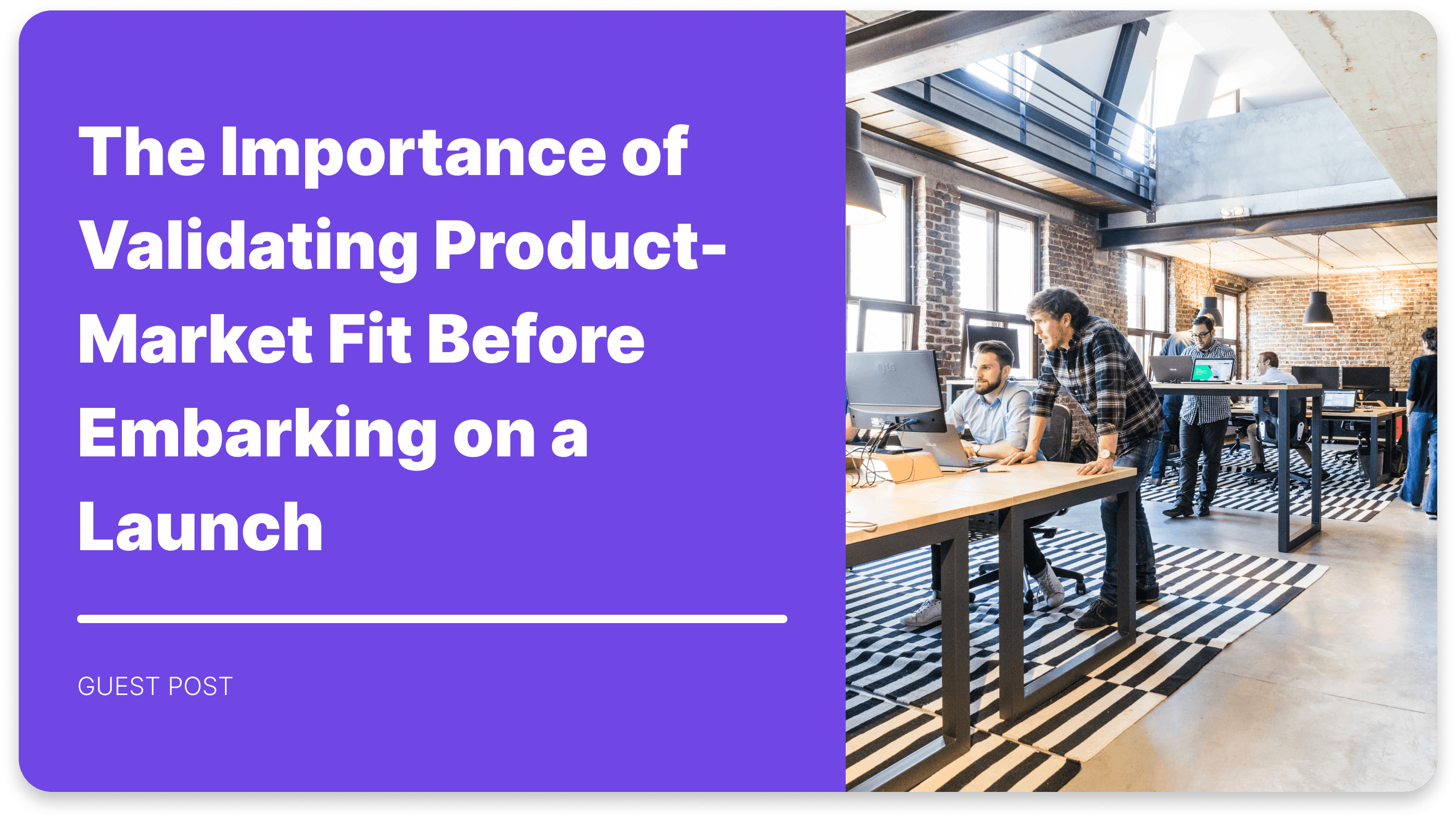The Importance of Validating Product-Market Fit Before Embarking on a Launch

Between the high unemployment during COVID, the shift to remote work, lockdown isolation, backed up supply chains, and now a rocky economy, the last few years have been a whirlwind for inventors, investors, and entrepreneurs.
With conventional employment norms thrown out of the window and a new vision for what ‘work-life’ should be, the time for entrepreneurship is now. According to the Census Bureau, applications for new businesses are rising at the fastest rate since 2007. Finally, many people have been pushed to take action on the business idea they’ve had for years.
Popular wisdom has glamorized risk and deemed it necessary for a new idea to become a successful business. As a result, entrepreneurs are often willing to take make-or-break risks, even when they can’t afford failure.
It doesn’t have to be this way.
After all, not every idea will succeed. Some statistics show that up to nine out of ten businesses will fail. If the stock market is dropping rapidly, Wall Street can halt all trading to avoid catastrophic losses. Entrepreneurs can do the same, by halting a doomed business idea before it’s too late. The sooner an entrepreneur can determine whether or not people will actually pay money for their idea as a product or service, the sooner they can shut an idea down and move on to another one—saving blood, sweat, money, and tears.
This is the concept of validating product-market fit. At Russell Marketing, Validation is Step 1 of our Five-Step High-Profit Launch System. It’s integral to defining what the go-to market strategy should look like, or if a particular product idea even should go-to market.
The truth is that most ideas are not game-changers. Many do not succeed. In the crowdfunding space—an industry devoted to launching new ideas—around 70% of launches fail to meet their funding goal and only 1.8% hit six-figures in revenue during their launch period.
Failure for an entrepreneur is a truly painful experience. I’ve seen founders remortgage their homes and take on loans they can’t afford to pursue their dream, only to see the product flop at launch. Validating product-market fit is a pivotal decision in the journey of an idea and you can complete the test in just a week or so, for less than the cost of the latest iPhone (in some cases a lot less).
A Validation test often takes the form of a simple sales funnel (the journey that a potential customer has to take in order to buy your product):
- You show your target audience a marketing message →
- Those who are interested click through to a page where you show them a specific offer (or offers) →
- Those who take you up on your offer(s) receive confirmation of their interest and a follow up ask or offer (such as completing a survey)
Let’s look at a popular Validation test blueprint: the fake checkout. This is a test we ran with OneClock, a new company that we helped raise $1,100,000 in less than two months via preorder.
The Fake Checkout

To start the funnel, show your target audience a marketing message
- Run ads that show your product and the solution it offers to the user
Those who show interest are shown a specific offer (or offers)
- Those who click on an ad are taken to a webpage, where they have the option to buy the product (for example, “Buy Now” buttons)
- Those who attempt to buy are moved to a second webpage, where they see a message indicating the product is out of stock, but giving them the option to provide their email address and to be notified when it becomes available again
Those who take up the offer(s) receive confirmation of their interest
- All users who provide their email address receive a welcome message which may ask them to complete an action (such as taking a survey)
This Validation test takes the user just four clicks to move through! There’s a lot going on under the surface, however, and this quick journey for the user has provided the entrepreneur with truly valuable information, such as:
- How much it will cost to reach target audiences through the advertising channels tested
- What percentage of people within target audiences show interest in your idea
- What percentage of people show strong enough interest that they’re considering buying it
- What percentage of people are already convinced on the idea
- How engaged prospective customers are
- Qualitative information directly from prospective customers
With the lessons learnt about the level of interest in an idea, and, critically, the level of interest in an idea at the price point it needs to be sold at for profitability, entrepreneurs can start to make projections on what profit margins will be down the line and whether this idea is viable. This is vital for the short and long-term success of business and dramatically helps to reduce painful surprises at launch.
So don’t regret a launch. Running a simple Validation test can save monumental amounts of time, money, and heartbreak, and allow creators to only invest in the best ideas.

Will Russell is Founder & CEO at Russell Marketing, a digital marketing agency specializing in e-commerce launch marketing and a preferred marketing partner of Indiegogo and Kickstarter.

